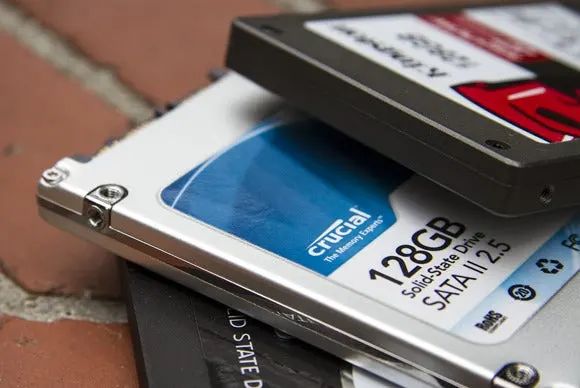Defragmenting a solid state drive (SSD) refers to optimizing the way data is stored on the drive to improve performance. Unlike traditional hard disk drives (HDDs) that use spinning magnetic platters, SSDs use flash memory chips to store data. This fundamental difference in technology means that defragmenting SSDs works differently than defragmenting HDDs.
How is data stored on an SSD?
On a HDD, files are stored in sectors on the magnetic platters. When a file is deleted, these sectors become free space. Over time, this can lead to fragmentation – where parts of a file are scattered in different locations rather than being in one contiguous block. This requires more movement of the HDD’s read/write heads to access all the fragments of a file, slowing down performance.
SSDs have no moving parts. Data is stored in blocks on NAND flash memory chips. When a file is deleted, the SSD controller marks the blocks as empty and available for use. There is no “fragmentation” in the traditional sense, as data does not get scattered to different physical locations. However, the free space on the SSD may become very fragmented over time as files are written, deleted, and rewritten.
Does defragmenting improve SSD performance?
Defragmenting HDDs improves performance by consolidating file fragments into contiguous blocks, minimizing read/write head movement. However, defragmenting SSDs does not provide the same benefit as there is no physical seek time to optimize.
In fact, excessive defragmenting can reduce SSD performance and lifespan. It causes unnecessary writes that consume bandwidth and amplify wear on the NAND flash cells due to the erase/program cycles. Most modern SSDs have native optimization techniques like garbage collection, TRIM, and wear leveling that maintain performance and lifespan without requiring defragmentation.
When should you defrag an SSD?
You typically do not need to defragment modern SSDs. Operating systems like Windows 10 and macOS have intelligence built-in to determine if and when an SSD needs defragmentation. Manual optimization is rarely required.
However, there are some cases where defragmenting an SSD may help:
- When first switching from HDD to SSD, defragging can align SSD partitions properly.
- On older SSDs that lack native optimization features like TRIM.
- If drive performance has degraded significantly over time.
Use the native defrag tools in your operating system, like Optimize Drives in Windows 10, and only defrag occasionally when needed. Aggressive third-party defrag tools should be avoided.
Common SSD defragging myths
There are some common misconceptions around defragging SSDs:
Myth: Defragging extends SSD lifespan
Reality: As explained above, defragging causes extra writes which consumes endurance. It does not extend lifespan.
Myth: The performance boost is the same as on an HDD
Reality: Due to the fundamental difference in technology, defragging provides minimal gains for SSDs in most cases.
Myth: You should defrag regularly to optimize performance
Reality: With native optimization features, defragging is rarely needed with modern SSDs. Only do it occasionally when troubleshooting degraded performance.
Best practices for maintaining SSD performance
Instead of regular defragmentation, follow these tips to keep your SSD performing optimally:
- Keep at least 10-20% of drive space free for best performance.
- Enable TRIM in your operating system if supported.
- Use the native tools to occasionally optimize your SSD when needed.
- Avoid aggressive third-party defrag tools designed for HDDs.
- Update firmware and drivers to latest available versions.
- Monitor SSD health metrics like total bytes written for signs of wear.
When to consider replacing your SSD
SSD performance will gradually decline over time as cells wear out from use. When should you consider replacing an older SSD?
- Health monitoring tools show high wear levels or excessive bad blocks.
- Benchmark speeds have dropped well below rated specs.
- You are regularly seeing errors, hangs, crashes etc.
- Drive has reached or exceeded its rated endurance limits.
- Support for TRIM/garbage collection is lacking.
A modern SSD in good health should continue performing well for many years with proper maintenance. But SSD lifespan is not infinite, so replacement may eventually be needed.
Conclusion
Defragmenting SSDs does not provide the same performance benefits as on HDDs due to fundamental technology differences. Excessive defragging can prematurely wear out an SSD. Modern SSDs rarely need defragmentation thanks to native optimization features. Only use the built-in tools occasionally when troubleshooting degraded performance rather than defragging regularly. Follow best practices like enabling TRIM and monitoring health to maximize SSD lifespan.

